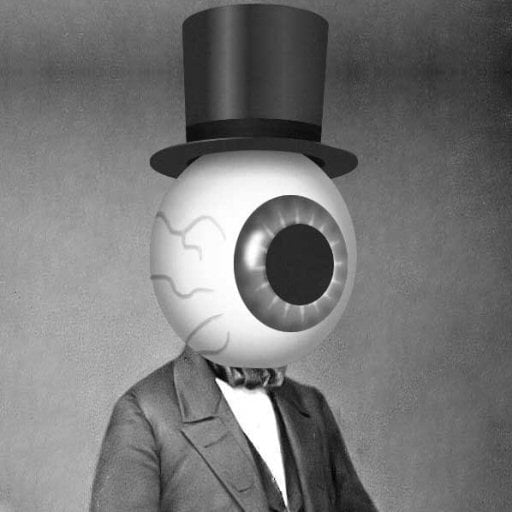I’m setting up with HA and zigbee smart bulbs. I’ve got a few automations already set up, such as turning on a bunch of lights in the morning and turning most of them off again at night.
All these lights still have physical switches. I don’t want to take those switches out for lots of reasons, and putting smart switches there seems like overkill when the bulbs are already smart. What are people doing with their physical light switches to ensure that they don’t get flipped?
Ideas I’ve had:
- some kind of physical plastic covering that fits snugly around it. I’d probably do this if I had a 3d printer, but I don’t. Maybe someone sells a thing like this? More just a reminder not to touch them.
- Carefully paint the switches a different color (perhaps the HA color scheme?). Again, basically just a reminder. This especially makes sense with a few multi-switch plates where some of the connected lights are automated and some are intentionally left manual.
- Entirely replace the plate with a smart switch? Besides incurring a nontrivial cost and being a bunch of work to install, this won’t even help me with the aforementioned multiswitch plates. I don’t want all my lights automated.
Other ideas?
I make the switches smart, not the bulbs… Retains normal functionality, is cheaper and more reliable.
Cheaper? :O This is the super-deluxe splurge option compared to some cheap IKEA ZigBee bulbs
Got any recommendations? ZigBee, Zwave, or something else?
One nice thing about having the bulbs smart is changing the color temperature. Is there any way of doing that from the wall-switch? It’s kinda what’s been stopping me from upgrading from smart bulbs to smart switches
Cheaper? :O This is the super-deluxe splurge option compared to some cheap IKEA ZigBee bulbs
Depends how many bulbs are on each switch, in my home it is typically 4 to 1 at a minimum and the switch will outlive the bulbs. Color is about the only reason to use a smart bulb.
There are, but frankly it’s more expensive that way. You basically need an LCD display to make color selection feel useful.
If you have the money to go this route, I recommend having a single smart panel that controls groups of devices throughout the house
Color temperature is actually quite OK with simple remotes. Like the IKEA remote control used left and right arrows to change between stark white, warm yellow and happy medium.
Problem is non-smart bulbs with smart wall-switch can’t change color temperature. Theoretically I suppose there could be a switch/bulb combo, where the switch is Zwave/ZigBee enabled, and somehow communicate with the bulb. But I don’t think anything like that exists. It’d probably be very expensive if it did
My mistake, I read that as just color, not temp
They do have zigbee switches that can be programmed to specific devices, but I don’t know of any that have temp selectors on them.
This is my preferred solution. I like the option that I can use the switch as normal and still get benefits of automations. Switches should outlast any bulb on the market and with other family members around there’s no way to guarantee that they stay in place. Plus with that I can change the lamp itself to self-contained LED without bulb or something else and it’ll still be ‘smart’.
But if I absolutely had to go that route I’d get white tape (assuming the faceplate is white) and use that to hold rockers in place. It’s still easy to switch off if needed but that would give a pretty strong indication that it shouldn’t be operated normally. Preventing access to a switch or jamming them with something doesn’t seem like an safe option and it may be against the code depending on where you live.
Downside of switches though is that they often require a neutral wire. If all you have is “Hot”, “Not” and ground, your kinda dead in the water. Rewiring an old house can get pricey.
There are a variety of Zigbee switches and relay dukes that support “no neutral” wiring. SONOFF and Aqara both make them, there are even a few generic/Tuya ones I’ve seen.
They often don’t function as Zigbee routers, only end devices though despite being mains powered.
I also favour smart switches instead of smart bulbs. It avoids the problems of accidentally turning off the smart bulb with the dumb switch, and provides a fallback control method if part of the smart home stack is not working.
The main downside to this method is not being able to change the light colour and temperature of the bulbs. I have seen there are some smart switches and bulbs that can work combined but I haven’t tried them myself.
I have 1 light in my house that can’t be put on a smart switch because of wiring issues. For it I have printed a couple of locks (the light has 2 switches) similar to these.
I know you said you don’t have a printer, but check etsy. Every good model ends up being sold by somebody on etsy. Or you can check to see if your local library offers use of 3d printers, mine has a whole maker space in it now.
I never knew about the library thing! I think I’m going with these instead, but knowing my library has a 3d printer (it does!) will be far more powerful down the road.
I have Decora style dumb switches on some fixtures.with smart bulbs, and just use white vinyl electrical tape to tape the edge of the rocker down. Keeps the family from turning stuff off by accident, for the most part.
Low tech, but it works.
I went with momentary push-button switches connected to zigbee dimmers behind the wallplates. Cost more but it’s much more sensible, particularly for double switch situations where you just parallel up the switches.
Personally I prefer using smart switches, or smart relay modules in between the switch and bulb. However that’s maybe not best for you if you are already invested in smart bulbs.
The “neatest” options would be to fit a switch cover over the switch, or remove the switch and replace with a blanking plate. A smart button can be fitted onto the cover or plate to provide the functionality of a switch, there are devices with multiple buttons and even rotary knobs.
Depending on the style of light switch used in your country there may be commercially made switch covers available if you can’t 3D print them. There are also several 3D printing services online that can be fairly affordable, I’ve had decent service from Treatstock.
You can install switch blockers on the physical switches if you really want to go the smart bulb route.
Magnetic Light Switch Guards, ILIVABLE Light Switch and Outlet Cover for Flat Modern Switches, Not Child Proof (Clear, 2 Pack) https://a.co/d/aN57Zqe
CLYMENE Light Switch Cover Guard, Child Proof Wall Switch Cover Keeps Your Lights or Switches from Getting Accidentally Turned ON or Off, Toggle Style (White, 2 Pack) https://a.co/d/1WjLl5f
I plan to put guards on.
However, I’m first treating it as a service problem (if someone in the house is using the physical switch, I haven’t made it easy enough to use the controls, and more hardware may be required)Switch guards to keep people from accidentally using them but that allow you to use them if you need.
I 3D print a “missile switch cover” type of
. It makes it possible to flip the switch easy enough, but prevents turning it off by muscle memory.
This is why I never use smart bulbs for anything switched.
All you people spending money on switch covers. I rent this place so I’m not messing with the switches at all so I’ve just put a piece of white tape on the switches. Simple.
99 percent of the time we don’t have visitors. So the tape is there to stop my kids switching. We’ve had a smart home since 2021 so they’ve got used to it and don’t use them anymore.
Guests sometimes still do it but it’s rare and when it happens I just switch the light back on.
You wire them up to a switch sensor.
If you don’t have a neutral wire, use a wire nut to connect the power. Then I use this battery powered zwave switch to control the lights https://www.amazon.com/gp/aw/d/B09BQKD5FQ?psc=1
You can get cheap plastic covers that attach to the switch using the same screws that hold the plate around the switch.
They are open on one side so that you can easily get to the switch when desired.
We do smart bulbs with the covers on any switches, and the switches of course left on. Then it’s easy to do whatever brightness/colors desired with automation routines.
I use these:
But something like either of these would be easy to print:









